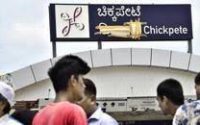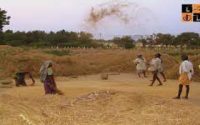$100 Website Offer
Get your personal website + domain for just $100.
Limited Time Offer!
Claim Your Website NowState’s disaster management is disastrous, says High Court
Source: thehindu.com
The State’s disaster management is itself “disastrous” due to non-implementation of several crucial provisions of the Disaster Management Act, 2005. This, even though the State witnessed several droughts and floods all these years, the Karnataka High Court observed on Monday.
A Division Bench comprising Chief Justice Abhay Shreeniwas Oka and Justice Mohammad Nawaz made these oral observations after observing that the State Disaster Management Authority (SDMA), headed by none other than the Chief Minister, existed “only on paper” as it held its first and only meeting on August 2, 2019, even though it was constituted in May 2008.
The Bench was hearing PIL petitions complaining about lapses in providing relief to cattle owners in drought-affected areas and lack of enforcement of the Disaster Management (DM) Act in the State.
Also, the Bench noted that the State Executive Committee (SEC), headed by the Chief Secretary, which has been entrusted with vast powers and responsibilities, including examining the vulnerability of different parts of the State to different forms of disasters and to specify measures to be taken for their prevention or mitigation, held no meeting between 2008 and 2010. And the SEC had met only 11 times since its reconstitution in April 2013.
The SEC met only twice, in March and August this year when 156 taluks of the State were declared drought-affected and several parts of the State suffered due to floods, the Bench observed.
The Bench also noticed that State Disaster Mitigation Fund (SDMF) also exists only on paper due to lack of budgetary allocation to the fund from 2014-15 onwards.
Though the government claimed that there is a State Disaster Management Plan (SDMP) in place since 2016-17 as the SEC had prepared it, the Bench declined to accept the contention that there is a SDMP as it was neither approved nor was reviewed and updated annually as per the DM Act.
The Bench also directed the government to clarify on whether there should be only replacement of cattle deaths due to drought or flood, or monetary compensation could be paid for loss of heads of cattle, and whether the State government was justified in evaluating the value of the dead cattle to pay compensation, or should a lump sum amount be fixed by the Union government for different types of animals.



